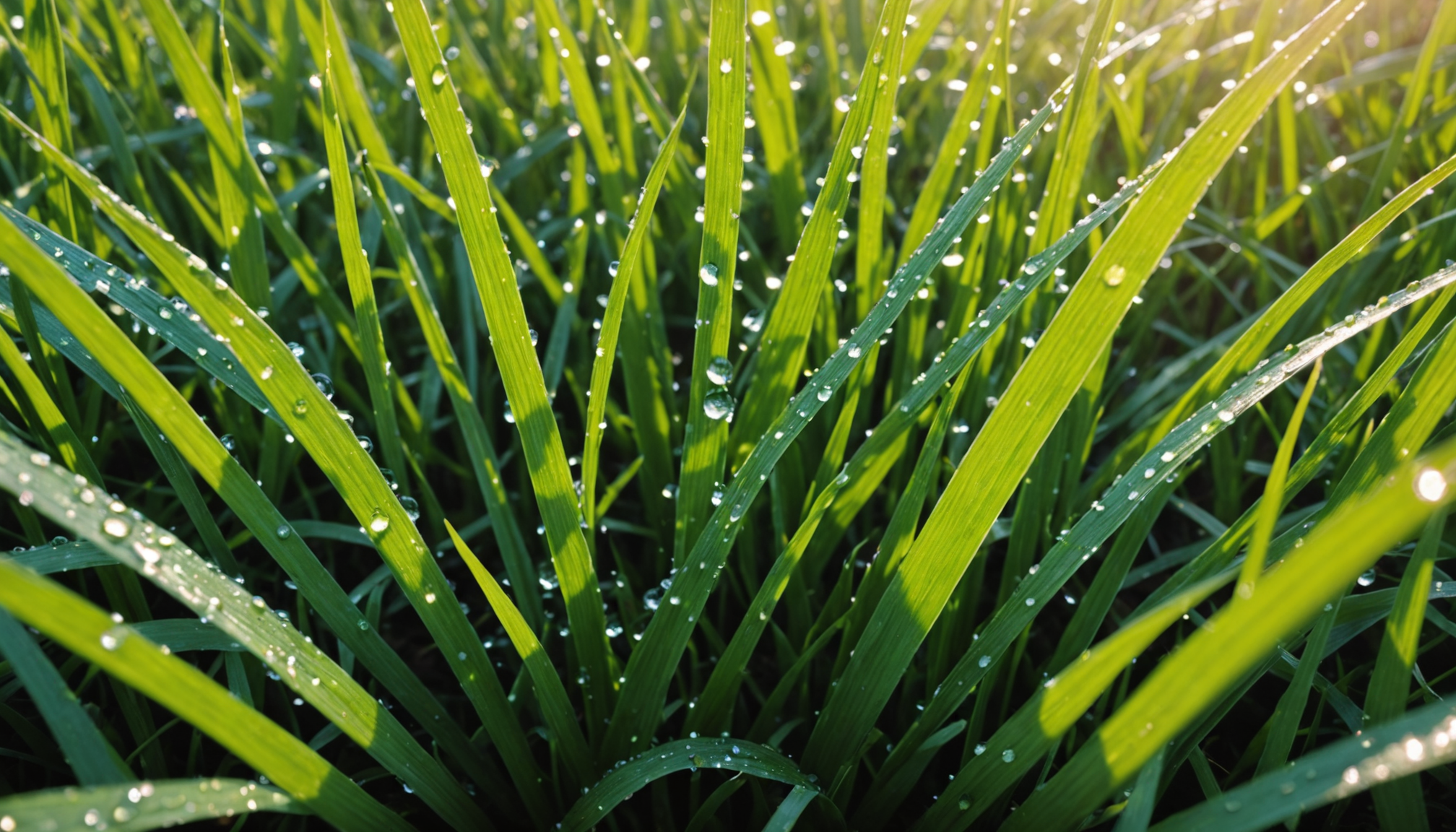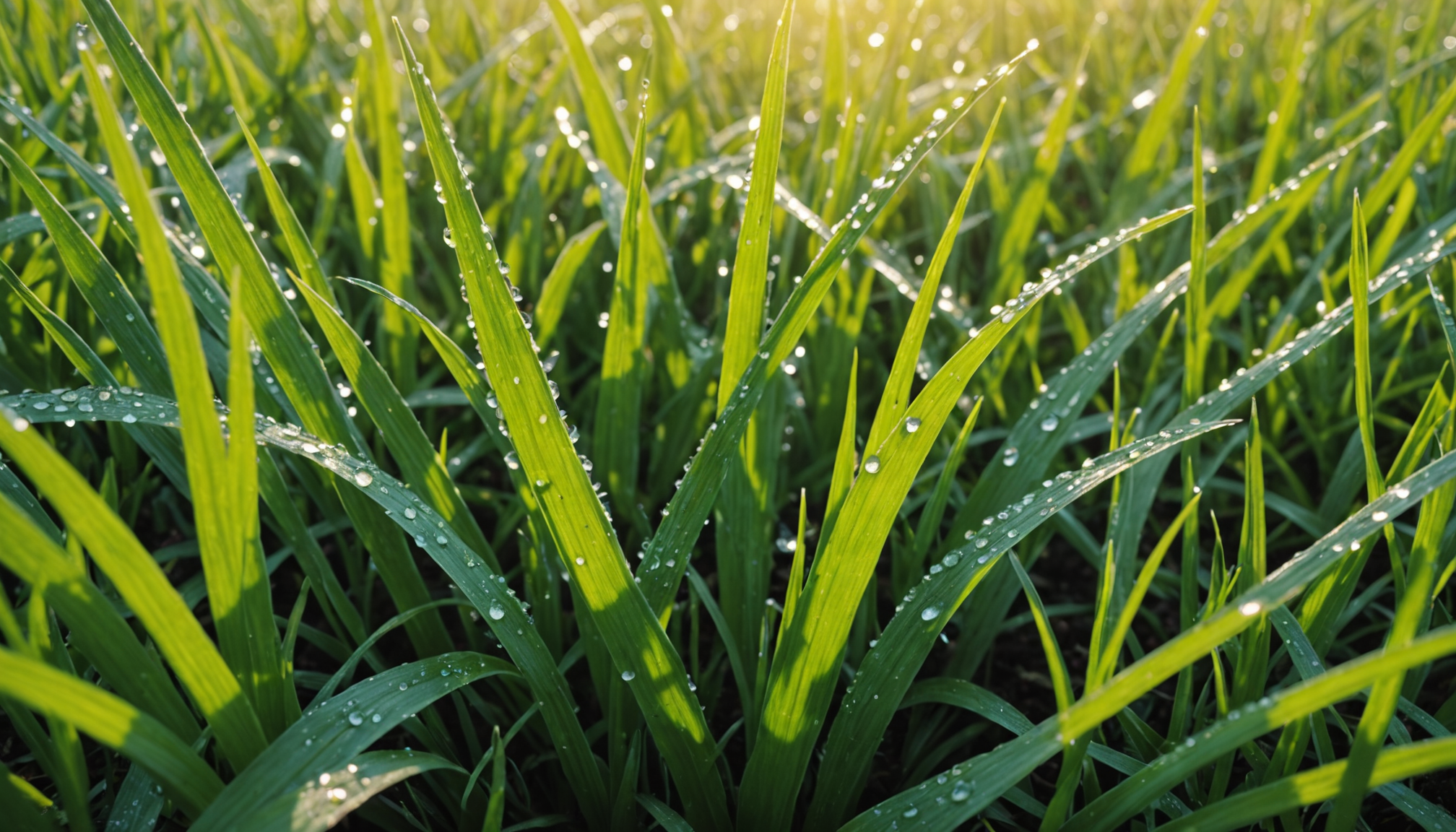When it comes to achieving a lush, vibrant lawn without relying on harsh chemicals, choosing the right natural lawn care products is crucial. These eco-friendly options are not only better for the environment but also safer for your family and pets. By understanding the ingredients and benefits of natural lawn care products, you can effectively integrate them into your grass maintenance routine.
Natural lawn care products often contain organic materials and beneficial microorganisms. These ingredients work by enhancing soil health, promoting robust root development, and improving the overall vitality of your lawn. Essential components to look for in natural lawn fertilizers include:
- Composted Manure: Rich in nutrients, composted manure provides a steady release of nitrogen essential for healthy grass growth.
- Bone Meal: A great phosphorus source, bone meal aids in root development and vibrant blooms in ornamental grasses.
- Kelp and Seaweed Extracts: Packed with trace minerals, these extracts help improve soil structure and resilience, enhancing drought tolerance.
Beyond fertilizers, consider utilizing natural pest and disease control products. Many eco-friendly gardening solutions, such as neem oil and diatomaceous earth, offer effective alternatives to chemical pesticides. They target specific pests without harming beneficial insects crucial for a balanced ecosystem.
When selecting natural lawn care products, it can be beneficial to compare their properties and suitability for your specific lawn requirements. Here is a comparison table of typical components found in organic versus chemical lawn care products:
| Product Type | Organic Components | Chemical Components |
| Fertilizers | Composted manure, bone meal, kelp | Synthetic urea, ammonium phosphate |
| Pest Control | Neem oil, diatomaceous earth | Pyrethroids, organophosphates |
| Weed Control | Corn gluten meal, vinegar | Glyphosate, 2,4-D |
By integrating natural lawn care products into your grass maintenance regimen, you contribute to preserving biodiversity, enhancing soil health, and reducing the carbon footprint typically associated with traditional lawn care. This sustainable approach not only fosters a beautiful landscape but also supports an eco-friendly gardening practice that is in harmony with nature.
understanding soil health
Understanding soil health is a vital component in achieving a lush and vibrant lawn through eco-friendly gardening practices. Healthy soil provides the essential nutrients, structure, and pH balance necessary for optimal grass growth. By focusing on improving soil health, you create a sustainable foundation for your lawn that reduces the need for harsh chemical interventions. Here are steps to enhance soil health naturally within your lawn care routine:
- Conduct a Soil Test:
- Purchase a soil testing kit from a local garden center or contact your local agricultural extension office for professional testing.
- Collect soil samples from various spots in your lawn, ensuring you dig to a depth of 4 to 6 inches for an accurate assessment.
- Analyze the results to understand nutrient levels, pH balance, and organic matter content.
- Adjust Soil pH:
- If your soil is too acidic (low pH), consider adding lime to raise the pH level to a neutral range (6.0 to 7.0).
- For alkaline soil (high pH), sulfur can help lower the pH to the desired range.
- Follow the guidance from your soil test results for precise application rates, ensuring balanced and healthy soil conditions.
- Enhance Soil Structure with Organic Matter:
- Incorporate generous amounts of compost or well-aged manure to improve soil texture and increase its ability to retain nutrients and water.
- Apply a 1 to 2-inch layer of organic matter over the lawn in the spring or fall and gently rake it into the soil.
- Repeat the application annually for ongoing soil enhancement.
- Encourage Beneficial Microbial Activity:
- Apply natural fertilizers that contain beneficial microorganisms, such as compost tea or products enriched with mycorrhizae.
- Avoid harming soil life by reducing or eliminating the use of synthetic pesticides and herbicides.
- Implement Aeration Practices:
- Aerate your lawn at least once a year, especially in compacted or high-traffic areas, to allow air, water, and nutrients to penetrate the soil more effectively.
- Choose between spiked shoes, manual aerators, or machine aerators based on your lawn size and condition.
- Maintain Organic Mulch:
- Leave grass clippings on your lawn after mowing to serve as a natural mulch layer. This practice, known as grasscycling, helps enrich the soil with nutrients and retains moisture.
- Aim to mow regularly to ensure clippings are short and decompose quickly without smothering the grass.
By prioritizing soil health as part of your grass maintenance strategy, you not only cultivate a robust and vibrant lawn but also contribute to a more sustainable environment. The focus on understanding and improving soil conditions ensures a resilient yard capable of thriving with minimal interventions, aligning perfectly with eco-friendly gardening objectives.
selecting the right grass variety
Selecting the right grass variety is a cornerstone of effective lawn care, particularly when aiming for a lush lawn without resorting to harsh chemicals. Different grass species have unique traits and requirements, and choosing the most suitable variety for your specific climatic conditions and maintenance preferences is crucial to achieving a thriving, eco-friendly garden.
Firstly, consider your climate. Grass species are often classified into warm-season and cool-season varieties, each thriving in distinct temperature ranges. Cool-season grasses like Kentucky Bluegrass, Perennial Ryegrass, and Fescue varieties flourish in cooler climates, providing vibrant green lawns from fall to spring. These grasses perform well in regions with cold winters and mild summers. On the other hand, warm-season grasses such as Bermuda, Zoysia, and St. Augustine are more suited for areas with hot summers and mild winters, maintaining their lush appearance even in the height of summer.
Understanding your lawn’s sunlight exposure is equally critical. Some grass types are more shade-tolerant than others. If parts of your lawn are shaded by trees or buildings, opt for shade-tolerant varieties like Fine Fescues or certain strains of St. Augustine, which tolerate dappled sunlight and lower light conditions better than their sun-loving counterparts. Analyzing the amount of direct sunlight your lawn receives will guide your choice and contribute to healthy, year-round growth.
Assessing your soil type is another determinant in selecting a grass variety. Grass species have different soil preferences, and choosing one compatible with your lawn’s natural soil enhances root development and nutrient absorption, leading to less reliance on additional interventions. Conducting a soil test can provide insights into your soil’s pH and texture, helping to match the grass to your soil’s unique characteristics for optimal health.
Additionally, factor in your desired level of maintenance and usage. Some grass species demand regular mowing and more intensive care, while others are more forgiving and require less frequent interventions. For example, tall fescues offer a robust, low-maintenance option that can withstand foot traffic well, making them ideal for family lawns or areas where entertaining or playing is common.
Finally, contributing to biodiversity by choosing native grass varieties can significantly strengthen your eco-friendly gardening efforts. Native grasses are naturally adapted to your region’s conditions, encouraging local wildlife and enhancing the ecosystem’s balance. Doing so not only supports a healthier lawn but also promotes sustainability and environmental harmony.
By thoughtfully selecting a grass variety that aligns with your local conditions and personal lawn priorities, you lay the groundwork for a lush, low-maintenance landscape that thrives naturally. This alignment with nature reduces the need for chemical interventions, fostering a green space that is both visually pleasing and environmentally sound, fulfilling the holistic goals of sustainable gardening and grass maintenance practices.
natural pest and weed control methods
When it comes to keeping your backyard green and healthy using eco-friendly gardening techniques, battling weeds and pests naturally is essential. Traditional chemical methods, while effective, may harm beneficial insects and soil health. Instead, consider adopting natural solutions that align with your sustainable grass maintenance approach.
Firstly, integrating companion planting into your lawn care can naturally deter pests. Certain plants, when grown alongside your lawn, can repel unwanted insects while attracting beneficial ones. For instance, marigolds are known to repel nematodes, while lavender often keeps mosquitoes at bay. These companion plants provide a dual benefit of pest control and aesthetic enhancement.
Homemade pest deterrents are also valuable tools in natural lawn care. Solutions such as garlic spray or chili pepper-based concoctions can ward off a variety of pests. These sprays are simple to make, requiring just a few household ingredients, and offer a safe alternative to synthetic pesticides. Additionally, Diatomaceous Earth, a natural powder made from fossilized remains of tiny aquatic organisms, can be spread lightly over your lawn to deter slugs, beetles, and other crawling garden nuisances without harming the environment.
Natural predators play a critical role in maintaining a balanced ecosystem within your lawn. Encouraging insects like ladybugs, ground beetles, and parasitic wasps, which feed on common lawn pests such as aphids or grubs, can reduce the need for chemical interventions. Providing habitats for these natural allies, such as small logs or leaves, enhances their presence and activity in your yard.
When tackling weeds, consider manual methods combined with natural preventatives. Regularly pulling out weeds by hand ensures you remove the entire root system, preventing regrowth. However, this can be labor-intensive, especially for larger lawns. Using organic mulches or spreading corn gluten meal across your lawn can prevent weed germination naturally, acting as a pre-emergent weed controller. Remember, proper mowing practices, such as maintaining the grass at its recommended height, are key in overshadowing weed growth.
For particularly stubborn weed species, try a vinegar solution. Vinegar, when applied carefully through spot treatments, can kill weeds without affecting the rest of your lawn. Be cautious, though, as vinegar can harm grass if applied indiscriminately.
Maintaining a healthy balance in your lawn care ecosystem means sustaining beneficial insect populations while managing pesky intruders naturally. Strategies such as regular monitoring, correct identification of pests and weeds, and adopting a combination of these natural methods will support vibrant, eco-friendly gardening. These efforts create a thriving garden space that defies harsh chemicals and embraces a sustainable, nature-aligned approach.
sustainable watering and mowing practices
Efficient water and mowing strategies play a pivotal role in eco-friendly gardening, ensuring your lawn remains healthy and verdant without relying on harsh chemicals. The aim is to maintain an effective watering and mowing schedule that promotes grass resilience, minimizes water waste, and supports the sustainable maintenance of your lawn.
Begin by evaluating your lawn’s water needs, which largely depend on the grass variety and local climate conditions. A general rule is to water deeply but less frequently, thereby encouraging root systems to grow deeper in search of moisture. This deep-root approach enhances drought tolerance and reduces the frequency of watering, leading to significant water conservation. Early morning is the optimal time for watering; it maximizes absorption and minimizes evaporation and the risk of disease associated with overnight wetness.
To prevent overwatering, try the “screwdriver test.” Push a screwdriver into the soil; if it penetrates easily,watering isn’t necessary. This simple technique ensures you are providing the correct amount of moisture without excess. Additionally, consider installing a rain sensor or smart irrigation controller to automate watering based on current weather conditions, further optimizing your water usage and adapting to seasonal shifts.
Mowing practices complement watering strategies in grass maintenance. Cutting your grass at the appropriate height is crucial; each grass type has an ideal mowing height that supports healthy growth and shades out weeds. Generally, cool-season grasses are best maintained at 2.5 to 4 inches, while warm-season varieties can thrive at shorter heights, around 1 to 3 inches. Mowing frequently to remove no more than one-third of the grass blade at a time prevents stress and fosters a vibrant turf.
Keep your mower blades sharp for clean cuts that minimize stress on the grass. Dull blades can tear the grass, making it more susceptible to pests and diseases. Moreover, adopting a grasscycling habit can enhance lawn health by naturally recycling nutrients. Leaving grass clippings on the lawn after mowing not only returns nitrogen to the soil but also helps retain moisture, offering a no-cost fertilizer that supports long-term eco-friendly gardening.
Transitioning to a sustainable watering and mowing routine might seem gradual but it essentially aligns your lawn care efforts with nature’s rhythms. These practices not only persist with achieving and maintaining a lush lawn without harsh chemical interventions but also contribute to a more sustainable interaction with the environment, satisfying both your aesthetic goals and environmental responsibility.











